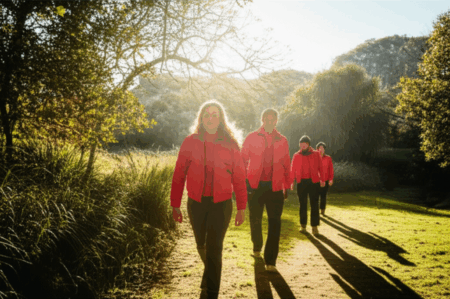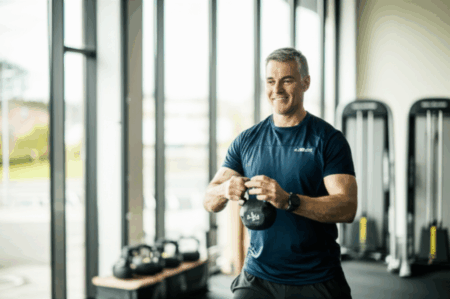For many, fitting exercise into a busy schedule feels like a constant battle. But what if the key to consistent, enjoyable, and effective workouts wasn’t just about finding any time, but the right time, perfectly aligned with your natural rhythms and personality? Emerging insights suggest that understanding your unique biological clock (chronotype) and core personality traits can significantly enhance your fitness journey, turning a chore into a fulfilling habit. There’s no universal “best” time to exercise; instead, the most effective time is when you’re most motivated and consistent.
This article delves into how aligning your workout schedule with your inherent preferences can unlock greater performance, mood benefits, and long-term adherence.

Understanding Your Chronotype: Larks, Owls, and Hummingbirds
Your chronotype refers to your natural inclination to be awake or asleep at certain times, driven by your circadian rhythm—your body’s internal 24-hour clock. Recognizing whether you’re a morning person (“lark”), an evening person (“owl”), or somewhere in between (“hummingbird” or intermediate type) is a foundational step in optimizing your exercise timing.
Morning Larks: Embracing the Dawn Workout
If you naturally wake up early feeling refreshed and energized, you’re likely a morning lark. For you, morning exercise offers a multitude of benefits:
- Boosted Energy and Focus: Starting the day with physical activity can increase alertness, jumpstart metabolism, and improve mental clarity and productivity throughout the day. This early boost can also set a positive tone and lead to healthier eating choices later on.
- Consistency: Morning exercisers often show higher adherence rates, possibly because they prioritize their workouts before other daily demands can interfere.
- Circadian Rhythm Alignment: Morning workouts, especially outdoors, can help synchronize your internal clock with external light-dark cycles, promoting earlier melatonin release and better sleep quality.
- Heart Health and Fat Loss: Some studies suggest that peak physical activity between 8:00 AM and 11:00 AM is associated with a lower risk of heart disease and stroke. Exercising in a fasted state in the morning can also enhance fat burning.
Night Owls: Thriving in the Twilight
If you feel most alert and productive later in the day, you’re a night owl. While morning workouts are often lauded, evening sessions offer distinct advantages for those whose bodies peak later:
- Peak Performance: Muscle function, strength, and endurance tend to be at their peak in the late afternoon or early evening due to naturally rising body temperature and hormone levels. This can lead to more intense and efficient workouts.
- Stress Relief and Unwinding: An evening workout can serve as an effective way to de-stress and release the day’s tension, reducing cortisol levels and releasing endorphins for an improved mood before heading home.
- Improved Sleep (with caveats): Moderate evening exercise can help regulate sleep patterns by raising body temperature, which then naturally cools down post-workout, signaling the body to prepare for rest. However, high-intensity exercise too close to bedtime might interfere with sleep for some.
- Flexibility and Injury Prevention: Muscles are warmer and more pliable in the evening, potentially reducing the risk of injury and making it an ideal time for flexibility training like yoga or Pilates.
Intermediate Types: The Flexible Approach
Many individuals fall into an intermediate chronotype, feeling neither strongly like a lark nor an owl. For these “hummingbirds,” midday or afternoon workouts can be highly beneficial:
- Midday Energy Boost: A workout during lunch or mid-afternoon can combat the “afternoon slump,” increasing focus and productivity for the remainder of the day.
- Sustained Energy: After a few meals, glucose levels are higher, providing ample energy for tackling harder workouts and potentially burning more calories.
- Schedule Adaptability: Midday offers flexibility for those who can’t commit to early mornings or late evenings due to work or family commitments.

Personality Traits and Exercise Preferences
Beyond chronotype, your personality traits—often categorized by the “Big Five” (Openness, Conscientiousness, Extraversion, Agreeableness, and Neuroticism)—also play a significant role in determining not just when you prefer to exercise, but how you prefer to exercise and what keeps you motivated.
Extroverts: The Social Motivators
Extroverted individuals tend to be outgoing, energetic, and thrive on social interaction.
- Preferred Time: While not strictly tied to one time, extroverts often enjoy group classes or team sports, which are frequently available in mornings and evenings. Their energy from social engagement means they can harness the collective motivation of a group workout regardless of the time.
- Workout Style: Extroverts typically prefer high-intensity training sessions, team sports, and group fitness classes that combine physical challenge with interpersonal interaction. They gain energy from exercising alongside others and respond positively to competitive elements. Free weights or high-energy classes where they can demonstrate strength or skill are also popular.
Introverts: The Solo Focus
Introverts typically gain energy from within and may find large social interactions draining.
- Preferred Time: Introverts might prefer times when gyms are less crowded, such as early mornings or later evenings, or they may opt for home workouts at any convenient time. A survey found that early exercisers were more likely to identify as introverts.
- Workout Style: These individuals often prefer solitary activities and quiet environments where they can focus inward without feeling observed. Solo sports and activities like swimming, running, cycling, walking, yoga, Pilates, tai chi, or traditional weightlifting with headphones are often ideal. The key is finding something that feels like “me time.”
Conscientious Individuals: The Goal-Oriented Planners
Highly conscientious people are organized, structured, and goal-driven.
- Preferred Time: They excel at sticking to routines, so once they’ve committed to a specific workout time—whether morning, afternoon, or evening—they are likely to adhere to it consistently.
- Workout Style: Conscientious individuals are often motivated by the health benefits of exercise and are excellent at setting and achieving fitness goals. They tend to have better overall fitness outcomes due to their disciplined approach.
Neurotic Individuals: Managing Stress Through Movement
Individuals high in neuroticism may experience emotional sensitivity, anxiety, and mood swings.
- Preferred Time: They might prefer private workouts and shorter, more manageable bursts of activity.
- Workout Style: While initially reluctant to start, neurotics often experience the most significant stress reduction benefits from consistent physical activity. They may prefer lower-intensity activities that can be easily modified or stopped when anxiety levels rise, or high-intensity workouts with short breaks. Focusing on mind-body exercises like yoga or tai chi, which promote inner focus and emotional regulation, can also be particularly beneficial.
Open Individuals: The Adventurous Explorers
People who score high in openness are curious, imaginative, and eager to explore new things.
- Preferred Time: Their flexible nature means they may enjoy switching between morning, afternoon, and evening workouts, or trying out new environments and formats.
- Workout Style: They are drawn to variety and may thrive by trying new fitness classes, adventurous outdoor activities, or constantly evolving their routine to avoid boredom.

Finding Your Personal Exercise Sweet Spot
Ultimately, the “best” time to exercise is the time you can consistently commit to and enjoy.
- Experimentation: Try exercising at different times of the day for several weeks to see how your body and mind respond.
- Chronotype Awareness: Identify your natural chronotype through self-observation or questionnaires.
- Listen to Your Body: Pay attention to when you feel most energized and least fatigued.
- Consistency is Paramount: Once you find a schedule that works, stick to it to allow your body to adapt and progress, building discipline and positive habits.
- Prioritize Sleep: Do not sacrifice sleep to exercise. Getting adequate rest is crucial for overall health and workout effectiveness.
By aligning your exercise routine with your inherent chronotype and personality, you can transform your fitness journey into a more enjoyable, sustainable, and rewarding experience.







